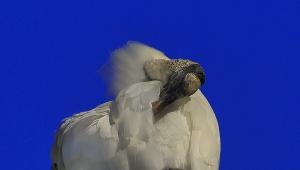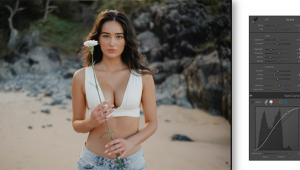Tamron’s AF18-250mm F/3.5-6.3 Di II LD Aspherical (IF) Macro; A 13.9x Zoom (!) For D-SLRs Page 2
I really appreciated the IF system when using a polarizer to enrich blue skies or to remove glare from the surface of red rocks in desert landscape photography. The corner-cut lens hood was useful, too. Even in bright sidelighting, this accessory--plus the multiple internal coatings--worked well to minimize flare, ensuring snappy contrast. When using manual focus for extreme close-ups of a floral arrangement, I found operation to be convenient and quick because the ring needs to turn less than 45Þ from infinity to the minimum focus distance.
 |
|
|
Optical Evaluation
During the past five years, I have tested a half dozen broad-range zooms and
found that this one was definitely better than average in the multipurpose category.
What was particularly impressive was the consistency of image quality at all
apertures. That aspect is a sign of well-designed optics. As a bonus, it minimizes
the need to use very small apertures that require faster shutter speeds, and
hence higher ISO levels. (Any camera produces the "cleanest" images
at low ISO settings.) While reviewing my images on a color calibrated 21"
ViewSonic Pro LCD monitor, I made the following observations:
· As with most zooms, shading (darkening at the corners) is visible in
images made at wide apertures, but the effect is minimized by f/5.6 at most
focal lengths and by f/8 at very long zoom settings.
· Barrel distortion (bowing outward of lines near the edges) was certainly
visible in the 18-24mm range when I took some test photos of a brick wall. That
might be a problem in formal architectural photography, but this zoom was not
intended for such applications.
· Image quality is most impressive at focal lengths from about 18-200mm.
Center sharpness is high at all apertures, and there's no compelling need
to stop down unless the primary subject is near an edge of the frame; then,
f/8 or f/11 produces the best results. After they were optimized for printing,
my best photos made for beautiful 11x15" prints.
· At long telephoto focal lengths, center sharpness is fine by f/8 but
there's some softness at the edges. That's not a huge issue since
the subject is generally near the center of the frame in images made at very
long telephoto settings. Still, for the best results, move in closer to the
subject when possible instead of using the maximum zoom setting. In spite of
that recommendation, my best long telephoto shots still made for very good 8x10"
glossies, the largest size that most families usually make or order.
· The close-focusing ability proved very useful for filling the frame
with a few small blossoms. I was pleasantly surprised at the high image quality
even at the long end, especially at f/11 to f/16, apertures that are useful
for adequate depth of field (the range of acceptably sharp focus).
 |
|
|
Final Assessment
The premium-grade wide aperture lenses of any brand always receive the highest
ratings and that's understandable. However, such products are hefty, large,
and expensive, so they're less practical for families or for most travel
photography. As well, they rarely cover all of the popular focal lengths, so
that means buying--and carrying--several lenses. Understandably, there's
a much higher demand for convenience zooms, and this Tamron model's 13.9x
zoom range will meet the needs and expectations of many consumers.
Considering the fine performance, this would also be a suitable addition to
a photo enthusiast's full D-SLR system. It's great for occasions
when you don't want to carry a full camera bag while hiking, cycling,
or touring, for example. Whether tucked into a hip pack or slung over a shoulder,
the weight/size of this lens (on a compact D-SLR) should rarely become a burden.
If you're interested in maximum versatility and portability do check out
this Tamron wide angle to super telephoto zoom. The combination of its many
features, rugged construction, and satisfying image quality should keep this
lens on the best seller list for years to come.
 |
|
 |
|
|
Technical Specifications
Model #: A18
Angle Of View (Diagonal): 75Þ to 6Þ
Maximum Aperture: 3.5-6.3
Construction: 16 elements in 13 groups
Minimum Focus Distance: 17.7"
Maximum Magnification: 1:3.5 at 250mm
Filter Size: 62mm
Dimensions: 2.9x3.3"
Weight: 15.2 oz
AF Mounts: Canon, Sony/Maxxum D, Nikon D, Pentax/Samsung
Price: $499 (street)
For more information, contact Tamron Lenses USA, Inc., 10 Austin Blvd., Commack,
NY 11725; (800) 827-8880; www.tamron.com.
A long-time "Shutterbug" contributor, stock photographer Peter K.
Burian (www.peterkburian.com)
is the author of several books, including "Mastering Digital Photography
and Imaging" as well as "Magic Lantern Guides" to the Sony
A100 and Pentax K10D. He is also a digital photography course instructor with
BetterPhoto.com.
- Log in or register to post comments
































